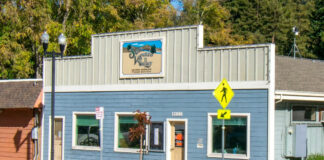Dear Editor,
The apparent failure last month of SLVWD rate-payers to muster the protest votes necessary to block the massive rate hike that has now taken effect raises some serious questions about the voting and vote counting process.
My work as an election integrity advocate and election forensics specialist is focused mainly on elections that bear national significance, but this local election caught my attention for its egregious vulnerabilities to fraud. As a rate-payer myself, I acknowledge a rooting interest in the result, but it is from the standpoint of procedural integrity that I am compelled to question it.
In what way can an election be regarded as worthy of trust in which the votes are collected and stored by an entity (in this case the SLVWD) with an obvious stake in the outcome? All the more so when the result is not determined by a “Yes vs. No” plurality, but by the accumulation of enough “No” votes to meet a pre-set threshold–in this case, half the total number of rate-payers.
It may well be that the SLVWD was a faithful steward of this election — collecting , storing, and counting all the ballots it received with exemplary care and impartiality. But — and this will always be a question when ballot custody is not entrusted to a disinterested entity — what would assure our community that a few boxes of ballots (enough to alter the outcome, which was reportedly 822 votes short) were not accidentally left behind in the basement when the counting took place on September 21?
I want to be clear that this is a generic, not a specific, red flag. No election should be conducted in this manner, and no election observer would certify the integrity of any election so conducted.
As to remedy for the procedural failure, if our community as a whole shares my distrust of such a process, I would suggest a request be made–perhaps by the Press Banner or by an ad hoc committee–to SLVWD for production of all of the ballots in its possession. They could then be sorted alphabetically and a community meeting held in which any rate-payer who submitted a ballot would be free to check that his or her ballot was present (this would, in essence, constitute an audit). Assuming that no ballots were found to be “missing,” the collected ballots would then be recounted (this would ensure that no ballots “missed” in the Sept. 21 count had found their way back into the pile).
Alternatively, it would be possible to organize what would amount to a “parallel election,” in which ballots were once more sent to all rate-payers but this time mailed to, collected, stored, and counted by an independent entity–preferably one outside the SLV region.
That may seem like a lot of trouble to go to–and of course it would be unnecessary if the election had been conducted correctly in the first place–but the stakes are substantial and would seem to warrant the effort and expense.
Elections, whether national or very local, must meet a standard of transparency and integrity if they are to gain public trust. Sadly, neither the SLVWD rate-hike election nor our national elections in the computerized voting era (and here the likely impacts have been catastrophic) have risen to such a standard.
Jonathan Simon, Felton












